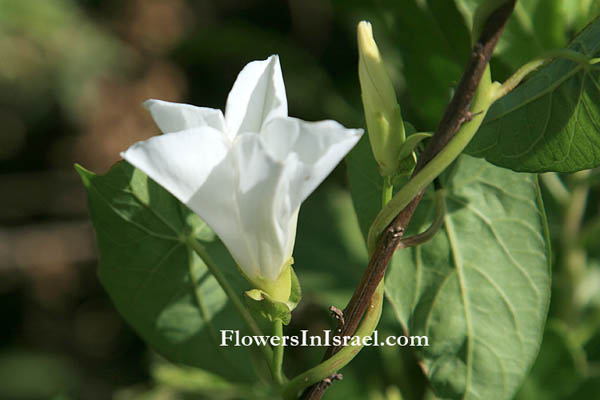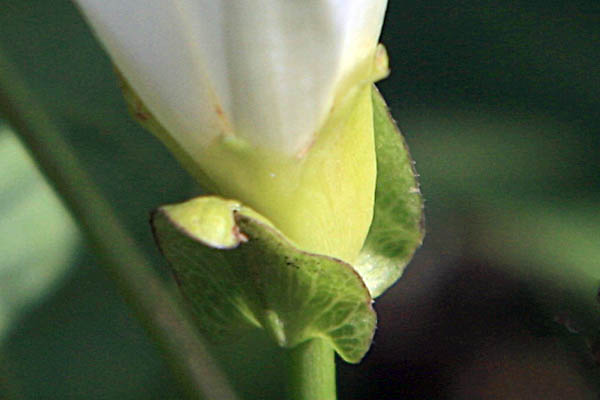Hebrew: חבלבלן המשוכות, Arabic: لبلاب السياجات
| Scientific name: | Calystegia sepium (L.) R. Br. | |
| Synonym name: | Convolvulus sepium L. | |
| Common name: | Greater bindweed, Hedge bindweed, milk convolvulus, wild morning-glory, Rutland beauty | |
| Hebrew name: | חבלבלן המשוכות | |
| Arabic name: | لبلاب السياجات | |
| Plant Family: | Convolvulaceae, חבלבליים |

|
| Life form: | Climber | |
| Stems: | Creeping roots as long as 3-4 m; twining light green or red stems; to a height of up to 200-400 cm | |
| Leaves: | Alternate | |
| Flowers: | White | |
| Fruits / pods: | Spherical capsule, 1 cm diameter, containing 2 to 4 large, black seeds | |
| Flowering Period: | May, June, July, August, September | |
| Habitat: | Humid habitats | |
| Distribution: | Mediterranean Woodlands and Shrublands | |
| Chorotype: | Euro-Siberian | |
| Summer shedding: | Ephemeral |

Derivation of the botanical name: Calystegia, Greek kalyx, calyx and stege, stegas covering, cover, referring to the large bracteoles. sepium, growing in hedges or used for hedges. Convolvulus, Latin, a bindweed (Plinius); convolvo, volutum ere, to roll together, roll up, interwine.
|